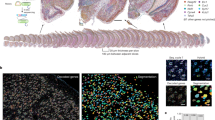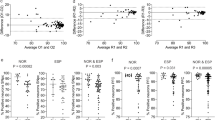Abstract
Exquisitely precise synapse formation is crucial for the mammalian CNS to function correctly. Retinal photoreceptors transfer information to bipolar and horizontal cells at a specialized synapse, the ribbon synapse. We identified pikachurin, an extracellular matrix–like retinal protein, and observed that it localized to the synaptic cleft in the photoreceptor ribbon synapse. Pikachurin null-mutant mice showed improper apposition of the bipolar cell dendritic tips to the photoreceptor ribbon synapses, resulting in alterations in synaptic signal transmission and visual function. Pikachurin colocalized with both dystrophin and dystroglycan at the ribbon synapses. Furthermore, we observed direct biochemical interactions between pikachurin and dystroglycan. Together, our results identify pikachurin as a dystroglycan-interacting protein and demonstrate that it has an essential role in the precise interactions between the photoreceptor ribbon synapse and the bipolar dendrites. This may also advance our understanding of the molecular mechanisms underlying the retinal electrophysiological abnormalities observed in muscular dystrophy patients.
This is a preview of subscription content, access via your institution
Access options
Subscribe to this journal
Receive 12 print issues and online access
$209.00 per year
only $17.42 per issue
Buy this article
- Purchase on Springer Link
- Instant access to full article PDF
Prices may be subject to local taxes which are calculated during checkout






Similar content being viewed by others
References
Waites, C.L., Craig, A.M. & Garner, C.C. Mechanisms of vertebrate synaptogenesis. Annu. Rev. Neurosci. 28, 251–274 (2005).
Sudhof, T.C. The synaptic vesicle cycle. Annu. Rev. Neurosci. 27, 509–547 (2004).
tom Dieck, S. & Brandstatter, J.H. Ribbon synapses of the retina. Cell Tissue Res. 326, 339–346 (2006).
Sterling, P. & Matthews, G. Structure and function of ribbon synapses. Trends Neurosci. 28, 20–29 (2005).
Straub, V. & Campbell, K.P. Muscular dystrophies and the dystrophin-glycoprotein complex. Curr. Opin. Neurol. 10, 168–175 (1997).
Henry, M.D. & Campbell, K.P. Dystroglycan inside and out. Curr. Opin. Cell Biol. 11, 602–607 (1999).
Ibraghimov-Beskrovnaya, O. et al. Primary structure of dystrophin-associated glycoproteins linking dystrophin to the extracellular matrix. Nature 355, 696–702 (1992).
Sugiyama, J., Bowen, D.C. & Hall, Z.W. Dystroglycan binds nerve and muscle agrin. Neuron 13, 103–115 (1994).
Winder, S.J. The complexities of dystroglycan. Trends Biochem. Sci. 26, 118–124 (2001).
Talts, J.F., Andac, Z., Gohring, W., Brancaccio, A. & Timpl, R. Binding of the G domains of laminin α1 and α2 chains and perlecan to heparin, sulfatides, α-dystroglycan and several extracellular matrix proteins. EMBO J. 18, 863–870 (1999).
Sugita, S. et al. A stoichiometric complex of neurexins and dystroglycan in brain. J. Cell Biol. 154, 435–445 (2001).
Ueda, H., Gohdo, T. & Ohno, S. β-dystroglycan localization in the photoreceptor and Muller cells in the rat retina revealed by immunoelectron microscopy. J. Histochem. Cytochem. 46, 185–191 (1998).
Jastrow, H., Koulen, P., Altrock, W.D. & Kroger, S. Identification of a β-dystroglycan–immunoreactive subcompartment in photoreceptor terminals. Invest. Ophthalmol. Vis. Sci. 47, 17–24 (2006).
Schmitz, F. & Drenckhahn, D. Localization of dystrophin and β-dystroglycan in bovine retinal photoreceptor processes extending into the postsynaptic dendritic complex. Histochem. Cell Biol. 108, 249–255 (1997).
Dalloz, C. et al. Differential distribution of the members of the dystrophin glycoprotein complex in mouse retina: effect of the mdx(3Cv) mutation. Mol. Cell. Neurosci. 17, 908–920 (2001).
Cibis, G.W., Fitzgerald, K.M., Harris, D.J., Rothberg, P.G. & Rupani, M. The effects of dystrophin gene mutations on the ERG in mice and humans. Invest. Ophthalmol. Vis. Sci. 34, 3646–3652 (1993).
Fitzgerald, K.M., Cibis, G.W., Giambrone, S.A. & Harris, D.J. Retinal signal transmission in Duchenne muscular dystrophy: evidence for dysfunction in the photoreceptor/depolarizing bipolar cell pathway. J. Clin. Invest. 93, 2425–2430 (1994).
Pillers, D.A. Dystrophin and the retina. Mol. Genet. Metab. 68, 304–309 (1999).
Nishida, A. et al. Otx2 homeobox gene controls retinal photoreceptor cell fate and pineal gland development. Nat. Neurosci. 6, 1255–1263 (2003).
Koike, C. et al. Functional roles of Otx2 transcription factor in postnatal mouse retinal development. Mol. Cell Biol. 27, 8318–8329 (2007).
Carter-Dawson, L.D. & LaVail, M.M. Rods and cones in the mouse retina. I. Structural analysis using light and electron microscopy. J. Comp. Neurol. 188, 245–262 (1979).
Iwasaki, M., Myers, K.M., Rayborn, M.E. & Hollyfield, J.G. Interphotoreceptor matrix in the human retina: cone-like domains surround a small population of rod photoreceptors. J. Comp. Neurol. 319, 277–284 (1992).
Dick, O. et al. The presynaptic active zone protein bassoon is essential for photoreceptor ribbon synapse formation in the retina. Neuron 37, 775–786 (2003).
Schmitz, F., Konigstorfer, A. & Sudhof, T.C. RIBEYE, a component of synaptic ribbons: a protein's journey through evolution provides insight into synaptic ribbon function. Neuron 28, 857–872 (2000).
Nomura, A. et al. Developmentally regulated postsynaptic localization of a metabotropic glutamate receptor in rat rod bipolar cells. Cell 77, 361–369 (1994).
Rao-Mirotznik, R., Harkins, A.B., Buchsbaum, G. & Sterling, P. Mammalian rod terminal: architecture of a binary synapse. Neuron 14, 561–569 (1995).
Robson, J.G. & Frishman, L.J. Response linearity and kinetics of the cat retina: the bipolar cell component of the dark-adapted electroretinogram. Vis. Neurosci. 12, 837–850 (1995).
Pillers, D.A. et al. Dystrophin expression in the human retina is required for normal function as defined by electroretinography. Nat. Genet. 4, 82–86 (1993).
Sigesmund, D.A. et al. Characterization of the ocular phenotype of Duchenne and Becker muscular dystrophy. Ophthalmology 101, 856–865 (1994).
Holzfeind, P.J. et al. Skeletal, cardiac and tongue muscle pathology, defective retinal transmission, and neuronal migration defects in the Large (myd) mouse defines a natural model for glycosylation-deficient muscle-eye-brain disorders. Hum. Mol. Genet. 11, 2673–2687 (2002).
Hohenester, E., Tisi, D., Talts, J.F. & Timpl, R. The crystal structure of a laminin G–like module reveals the molecular basis of α-dystroglycan binding to laminins, perlecan and agrin. Mol. Cell 4, 783–792 (1999).
Bowe, M.A., Deyst, K.A., Leszyk, J.D. & Fallon, J.R. Identification and purification of an agrin receptor from Torpedo postsynaptic membranes: a heteromeric complex related to the dystroglycans. Neuron 12, 1173–1180 (1994).
Ervasti, J.M. & Campbell, K.P. A role for the dystrophin-glycoprotein complex as a transmembrane linker between laminin and actin. J. Cell Biol. 122, 809–823 (1993).
Kanagawa, M. et al. Disruption of perlecan binding and matrix assembly by post-translational or genetic disruption of dystroglycan function. FEBS Lett. 579, 4792–4796 (2005).
Michele, D.E. et al. Post-translational disruption of dystroglycan-ligand interactions in congenital muscular dystrophies. Nature 418, 417–422 (2002).
Prakash, S., Caldwell, J.C., Eberl, D.F. & Clandinin, T.R. Drosophila N-cadherin mediates an attractive interaction between photoreceptor axons and their targets. Nat. Neurosci. 8, 443–450 (2005).
Bozdagi, O., Valcin, M., Poskanzer, K., Tanaka, H. & Benson, D.L. Temporally distinct demands for classic cadherins in synapse formation and maturation. Mol. Cell. Neurosci. 27, 509–521 (2004).
Sanes, J.R. & Lichtman, J.W. Induction, assembly, maturation and maintenance of a postsynaptic apparatus. Nat. Rev. Neurosci. 2, 791–805 (2001).
Gee, S.H., Montanaro, F., Lindenbaum, M.H. & Carbonetto, S. Dystroglycan-α, a dystrophin-associated glycoprotein, is a functional agrin receptor. Cell 77, 675–686 (1994).
Ervasti, J.M. & Campbell, K.P. Membrane organization of the dystrophin-glycoprotein complex. Cell 66, 1121–1131 (1991).
Zaccaria, M.L., Di Tommaso, F., Brancaccio, A., Paggi, P. & Petrucci, T.C. Dystroglycan distribution in adult mouse brain: a light and electron microscopy study. Neuroscience 104, 311–324 (2001).
Deng, C., Wynshaw-Boris, A., Zhou, F., Kuo, A. & Leder, P. Fibroblast growth factor receptor 3 is a negative regulator of bone growth. Cell 84, 911–921 (1996).
Acknowledgements
We thank Y. Kambara, M. Murai, T. Tsujii, E. Oiki, S. Takiuchi and K. Sone for technical assistance; Y. Saijoh, M. Uehara and H. Hamada for advice on the production of a knockout mouse; and N. Maeda for statistical analysis. This work was supported by Molecular Brain Science, Grant-in-Aid for Scientific Research on Priority Areas and Grant-in-Aid for Scientific Research (B), Grand-in-Aid for Exploratory Research, Specially Designated Research Promotion, Takeda Science Foundation, Senri Life Science Foundation, The Uehara Memorial Foundation and Mochida Memorial Foundation for Medical and Pharmaceutical Research. A part of this work was supported by the Nanotechnology Network Project of the Ministry of Education, Culture, Sports, Science and Technology Japan at the Research Center for Ultrahigh-Voltage Electron Microscopy, Osaka University (Handai Multi-functional Nano-Foundry).
Author information
Authors and Affiliations
Contributions
S.S. and T. Furukawa designed the project. S.S., Y.O. and K. Katoh carried out the molecular, immunocytochemistry and electron microscopy experiments. S.S., M.K., K.M. and T.K. carried out the ERG experiments. S.S., A.T. and T. Furukawa produced the knockout mice. S.S. and N.K. performed the electron tomography analysis. J.U. carried out the immuno–electron microscopy experiments. S.S. and K.F. performed the OKR experiments. T.M. and H.S. carried out the VEP experiments. S.S., Y.O., M.K., K. Kobayashi and T.T. conducted the pull-down experiments. S.S., Y.O. and T. Furukawa wrote the manuscript. Y.T., T. Fujikado. and T. Furukawa supervised the project.
Corresponding author
Supplementary information
Supplementary Text and Figures
Supplementary Figures 1–6 and Methods (PDF 753 kb)
Supplementary Movie 1
Rod photoreceptor synapse terminal from wild-type retina displayed as serial slices from a tomogram. Graphic representation of rod photoreceptor synapse termini based on electron tomography using UHVEM. Wild-type (a–c) and pikachurin−/− retina (d–f) are displayed as serial slices from a tomogram (a,d), serial slices with colored segmentation (b,e), and as a surface-rendered three-dimensional model (c,f). In the wild-type retinas, the synaptic ribbon of a rod photoreceptor (green) is adjacent to the horizontal cell processes (dark blue) and bipolar cell dendrites. (MPG 3177 kb)
Supplementary Movie 2
Rod photoreceptor synapse terminal from wild-type retina displayed as serial slices with colored segmentation. (MPG 6338 kb)
Supplementary Movie 3
Rod photoreceptor synapse terminal from wild-type retina displayed as a surface-rendered three-dimensional model. (MPG 6620 kb)
Supplementary Movie 4
Rod photoreceptor synapse terminal from pikachurin−/− retina displayed as serial slices from a tomogram. (MPG 6649 kb)
Supplementary Movie 5
Rod photoreceptor synapse terminal from pikachurin−/− retina displayed as serial slices with colored segmentation. (MPG 6672 kb)
Supplementary Movie 6
Rod photoreceptor synapse terminal from pikachurin−/− retina displayed as a surface-rendered three-dimensional model. (MPG 6624 kb)
Rights and permissions
About this article
Cite this article
Sato, S., Omori, Y., Katoh, K. et al. Pikachurin, a dystroglycan ligand, is essential for photoreceptor ribbon synapse formation. Nat Neurosci 11, 923–931 (2008). https://doi.org/10.1038/nn.2160
Received:
Accepted:
Published:
Issue Date:
DOI: https://doi.org/10.1038/nn.2160
This article is cited by
-
A combinatorial code of neurexin-3 alternative splicing controls inhibitory synapses via a trans-synaptic dystroglycan signaling loop
Nature Communications (2023)
-
Chain-specificity of laminin α1-5 LG45 modules in the recognition of carbohydrate-linked receptors and intramolecular binding
Scientific Reports (2023)
-
Electroretinogram abnormalities in FKRP-related limb–girdle muscular dystrophy (LGMDR9)
Documenta Ophthalmologica (2023)
-
Involvement of abnormal dystroglycan expression and matriglycan levels in cancer pathogenesis
Cancer Cell International (2022)
-
The role of the dystrophin glycoprotein complex in muscle cell mechanotransduction
Communications Biology (2022)



